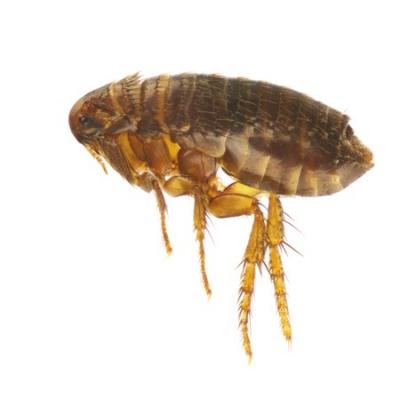
If you suspect that you may have an infestation of fleas 999 Pest Control can help.
In the event of infestation please call 999 Pest Control on 07775 801190
Adult Fleas are about 2-7mm long and brownish in colour. Their bodies are compressed which allows them to move efficiently through hairs, and their relatively large hind limbs allow them to have excellent jumping qualities.
All fleas live as parasites on warm blooded animals, and although the different species prefer their own host, the dog and cat flea can be found on and feeds from humans and other animals.
The females lay their eggs in the nest or bedding of the infested animals or in dust and crevices in buildings. The eggs then develop into bristly, legless larvae which pupate and turn into adults within approximately 7 weeks. Eggs are small oval shaped and pearl white. Larvae thrive in dark humid places. The pupa can remain through the winter, and emerge when triggered by the movement of a suitable host.
It was The Oriental Cat Flea which was the cause of millions of deaths during the middle ages spreading The Plague or Black Death as it was called. Whilst plague is not found in Britain it is still found in many other parts of the world.
Distribution
In the British Isles the following are most commonly found:
- The Cat Flea (Ctenocephalides felis)
- The Dog Flea (Ctenocephaides canis)
- And occasionally The Human Flea.
Pest concerns
- Fleas cause irritation to pets and people. They bite and feed on our blood.
- Fleas can breed at an alarming rate.
- Fleas have been known to spread disease.
- Fleas can be difficult to control because of the nature of their lifecycle
- Cat fleas account for the most common and largest infestations in the British Isles.
Control
If you suspect that you may have an infestation of fleas 999 Pest Control can help.
In the event of infestation please call 999 Pest Control on 07775 801190
